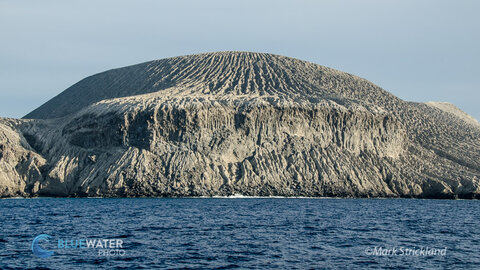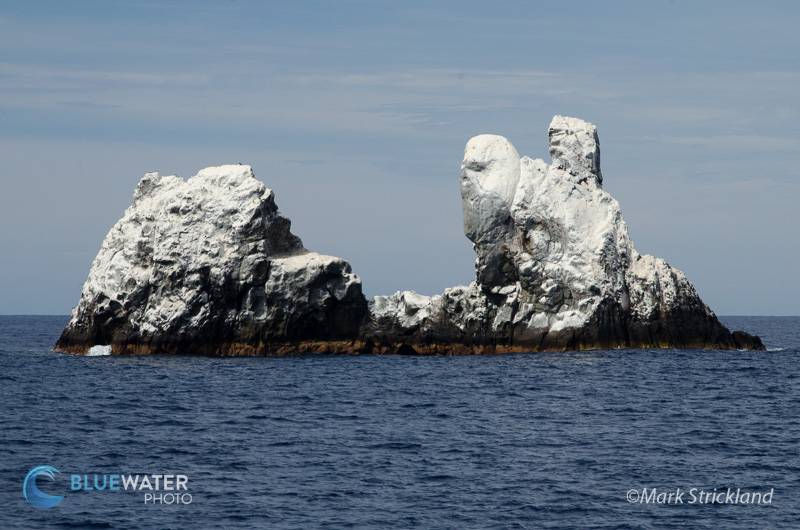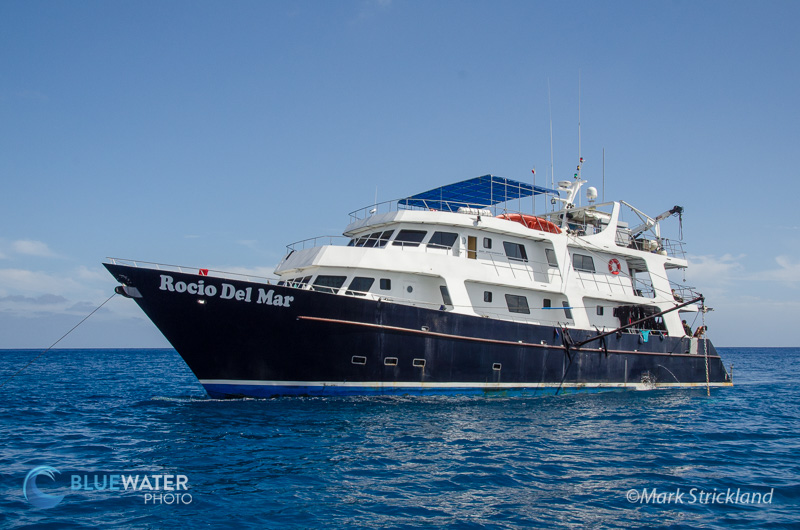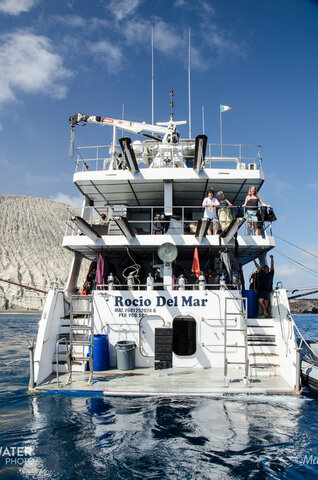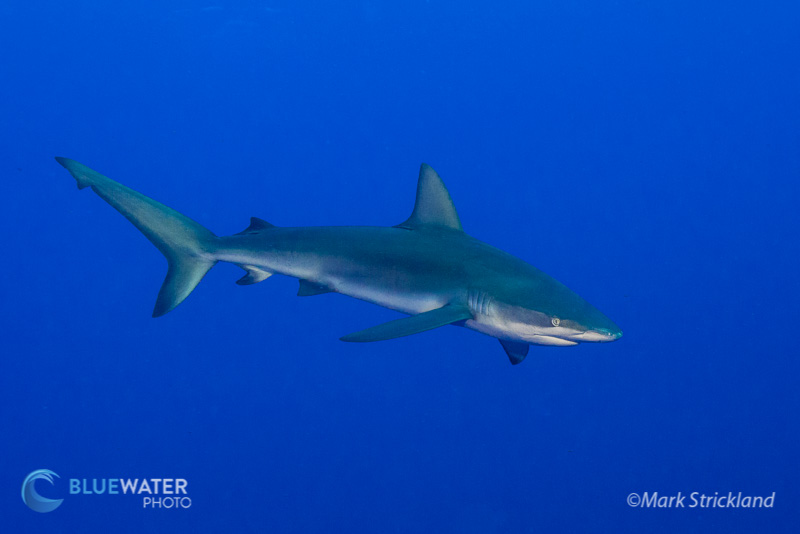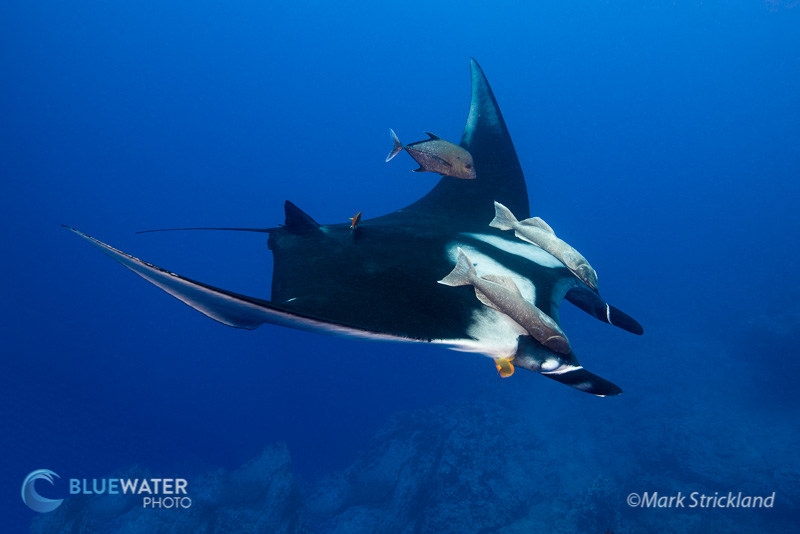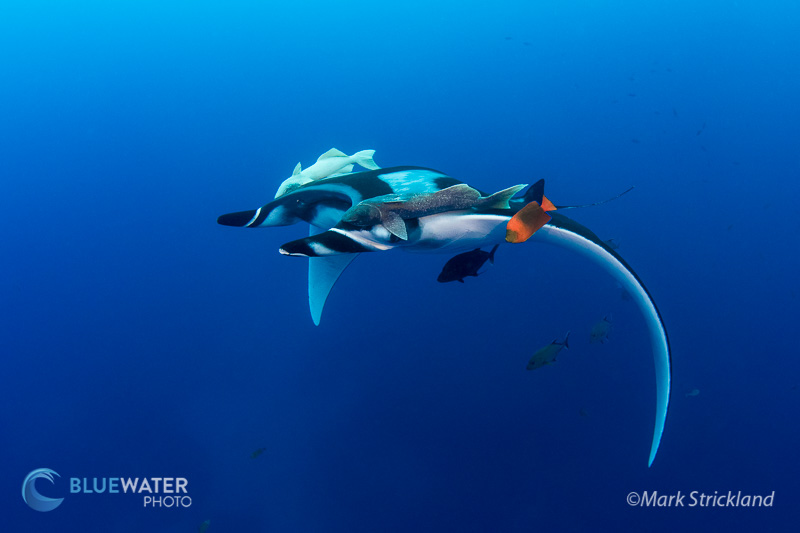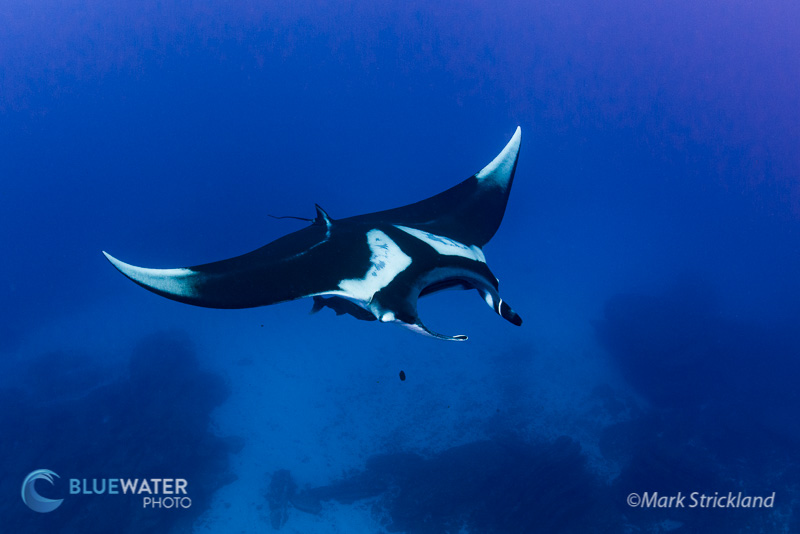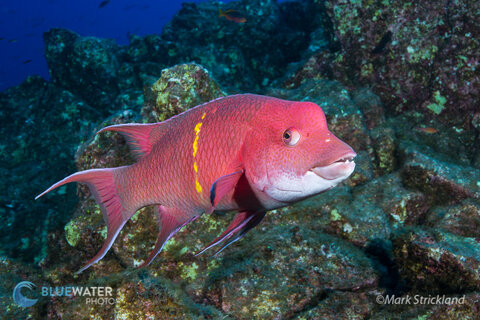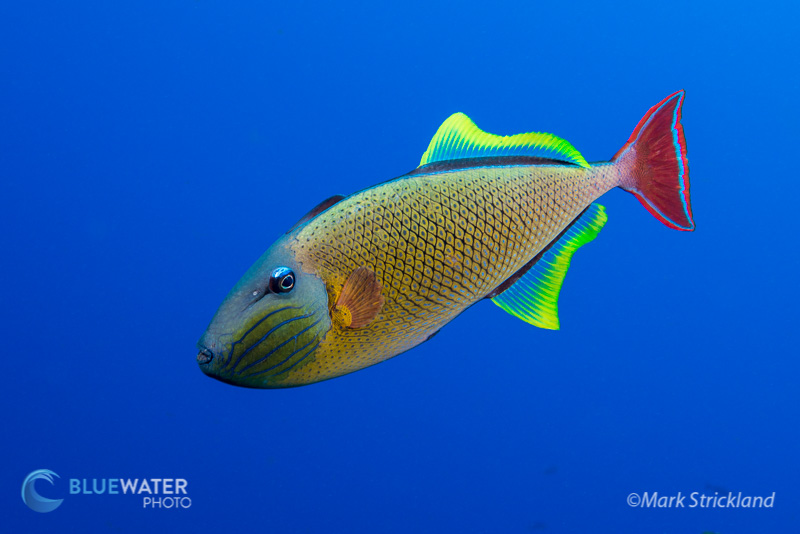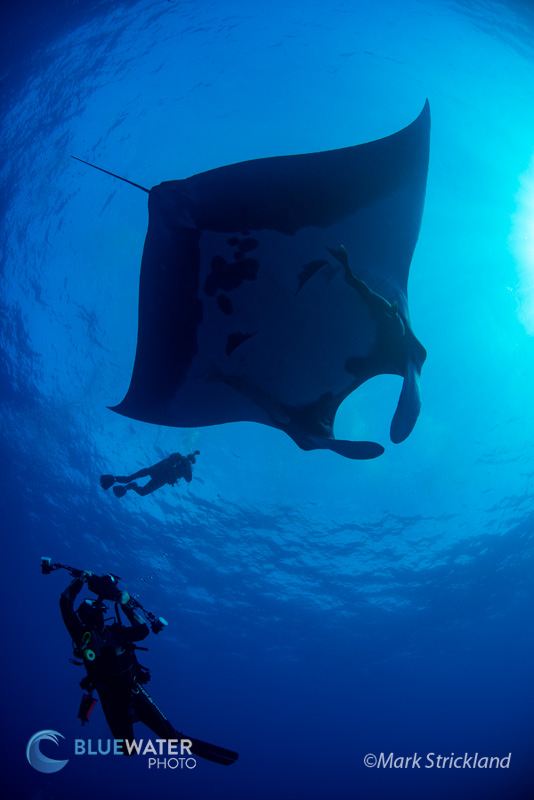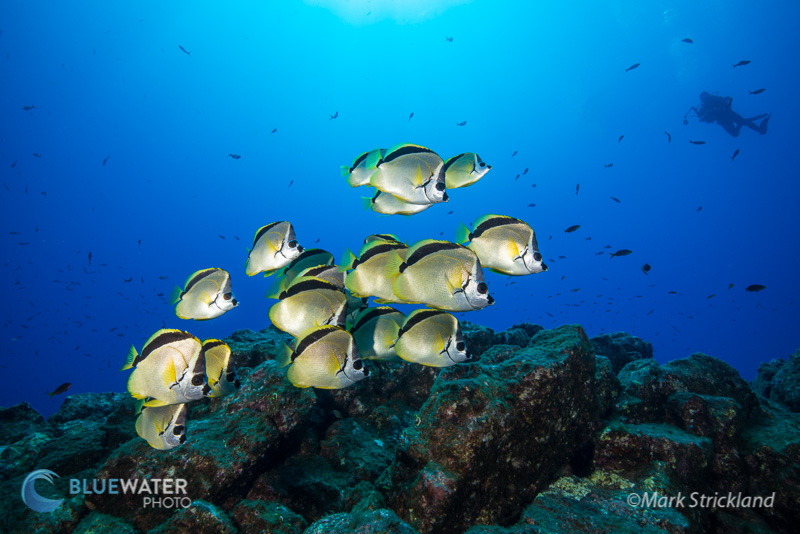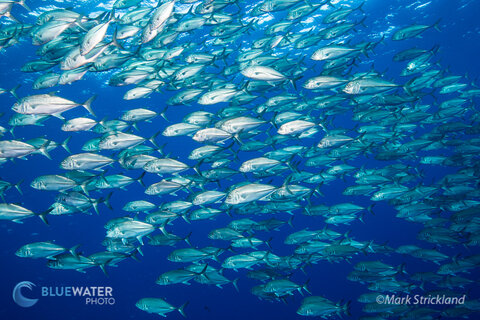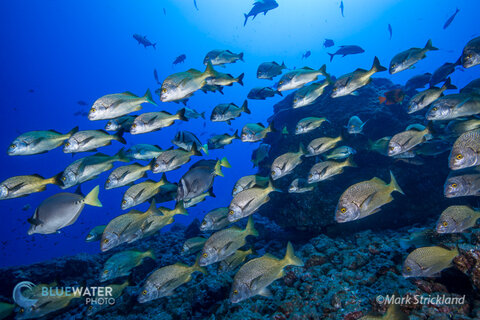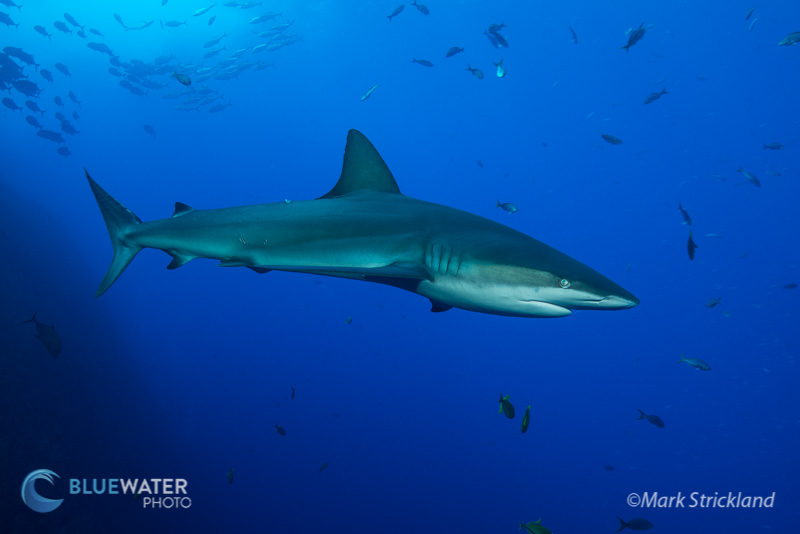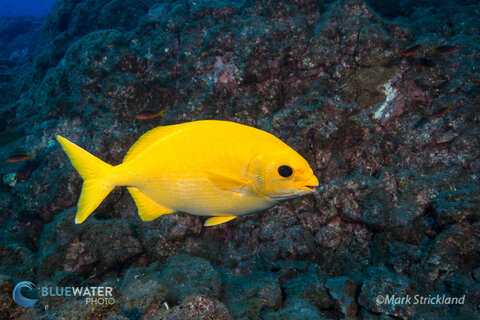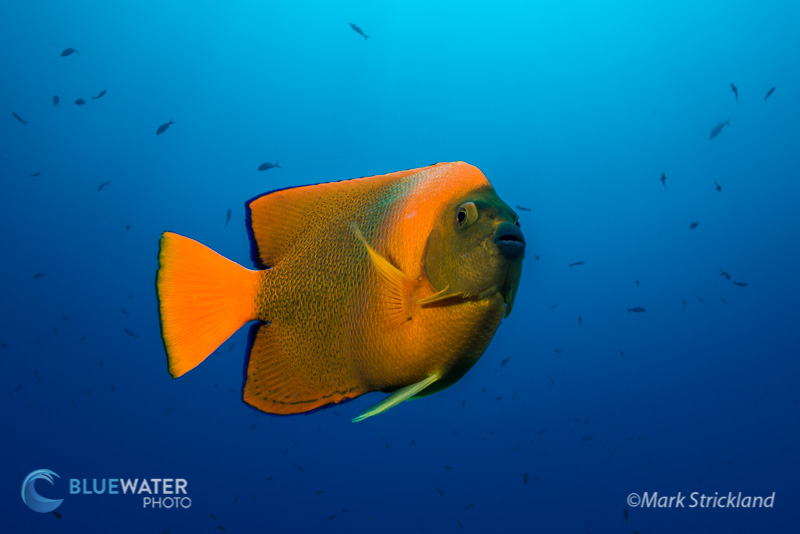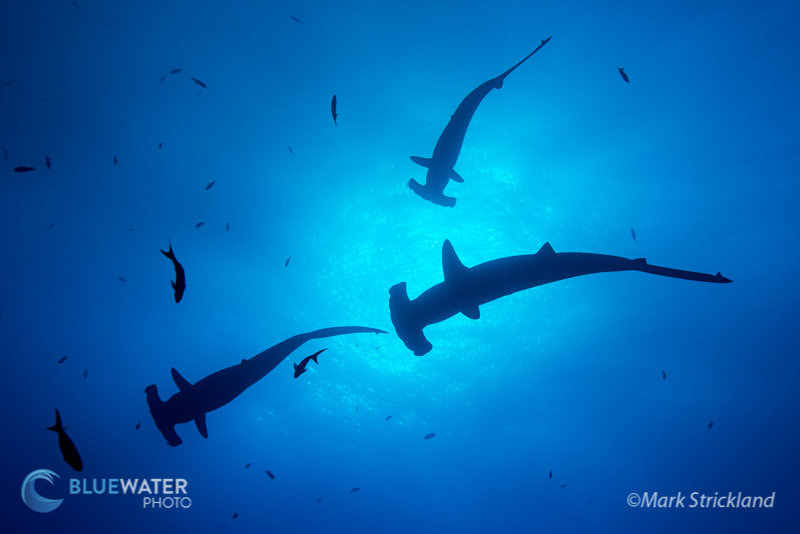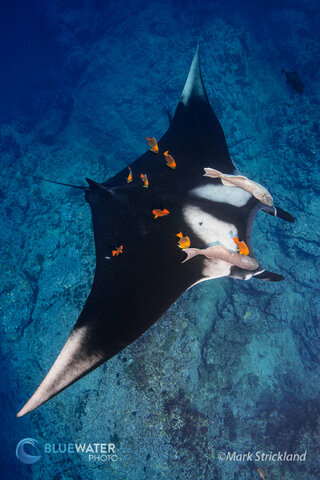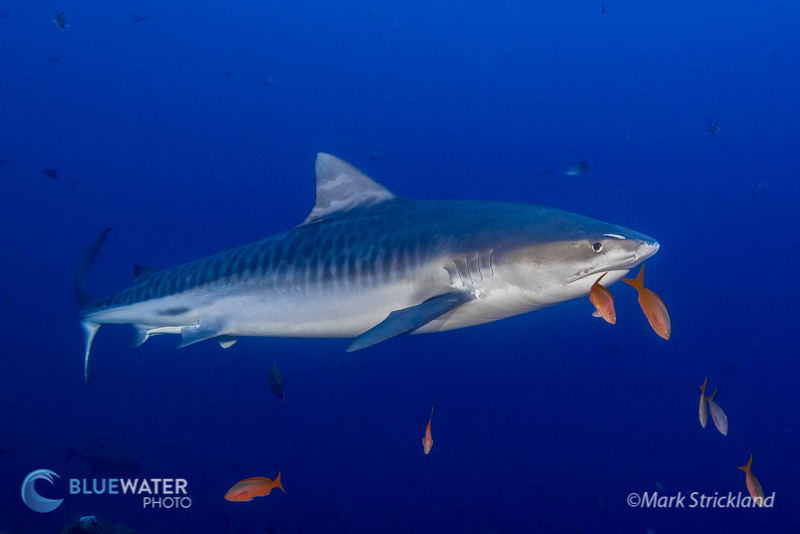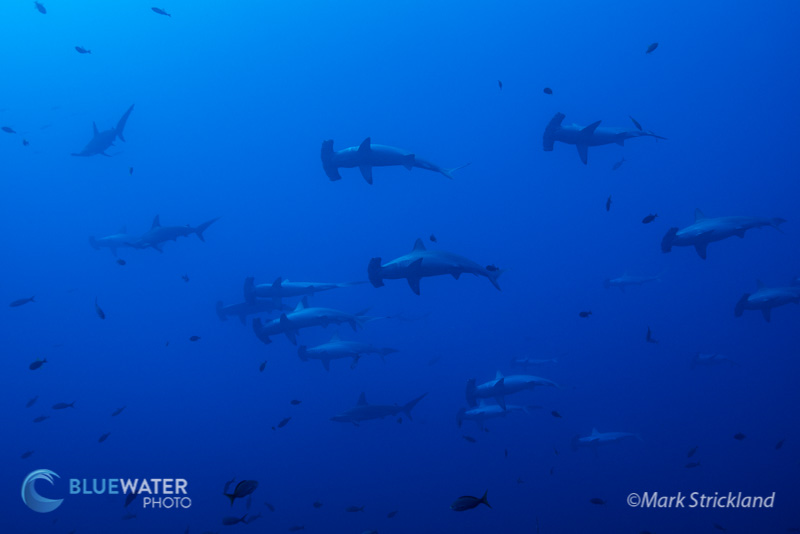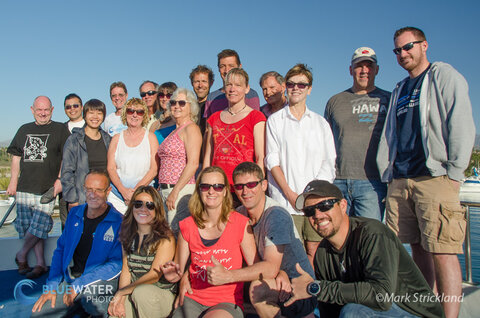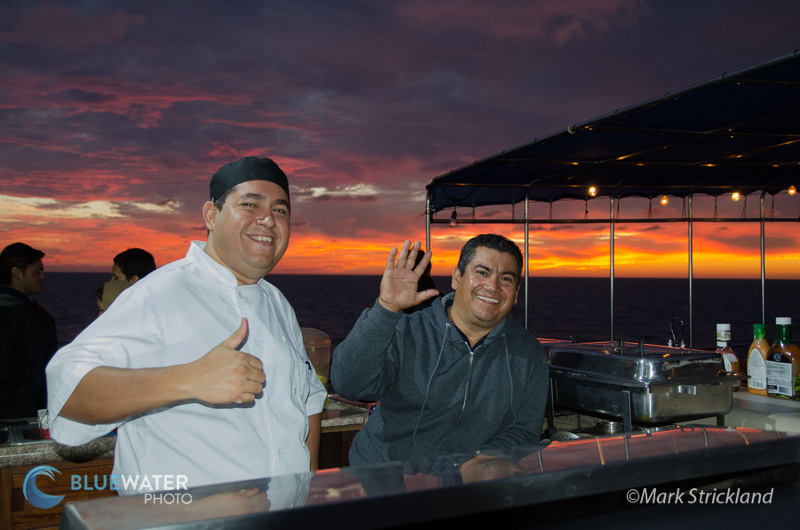Socorro Trip Report 2017
Bluewater Photo Workshop led by trip leader Mark Strickland
More correctly known as the Revillagigedo Archipelago, these four remote, widely separated volcanic islands are celebrated as some of the best places in the world to see big animals underwater. As anyone who’s been there will attest, its reputation is well deserved. A typically diverse Bluewater group, we consisted of 20 divers from all corners of the globe and varying levels of diving and photographic experience. All, however, shared a keen sense of adventure, and eagerly awaited our first dive among these fabled islands.
The closest of the islands is San Benedicto, which makes it the logical first stop of the trip. After a relatively smooth 25 hour crossing, we were greeted by a contingent of seabirds including tropic birds, blue-footed and brown boobies, the latter of which made themselves quite at home on the rigging of our floating home, the venerable Rocio Del Mar.
Our checkout dive was a relatively shallow site known as Las Cueuitas, where we were greeted by a pair of white-tip reef sharks and several stingrays. Shortly thereafter a large manta showed up, followed by a young tiger shark, immediately setting a high bar for expectations on the rest of the trip. We were diving in 3 separate groups, but nearly everyone saw at least one manta, and most saw the tiger shark as well.
For our afternoon dive and all of the following day, we moved around to the opposite side of San Benidicto to one of the region’s premier sites, a submerged pinnacle called “El Boiler”, named for the frothy surge that is often present at its shallowest point, about 10 feet below the surface. The Boiler is famous for giant mantas, which visit regularly to be cleaned by the endemic Clarion angelfish. The manta action here can be truly amazing, sometimes including five or more individuals. What really sets this site apart, however, is the remarkable affinity these animals display towards humans… they actually seem to enjoy bathing in the bubbles of divers’ exhaled air, and frequently come within touching distance.
Mantas are the undisputed stars at the Boiler, and we had lots of close encounters on the first two days, sometimes involving the same manta circling back for many successive passes. It’s hard to imagine anything upstaging these winged giants, but that’s exactly what happened on the first morning dive, when a pod of bottlenose dolphins showed up and cavorted among us for several minutes, to the delight of all concerned. There were plenty of other interesting creatures to be seen as well, including octopus, morays, Pacific stingrays, peacock flounder and plenty of colorful reef fish like Mexican hogfish, redtail triggerfish, spotted boxfish and Moorish idols.
The following day we found ourselves at another iconic site, Roca Partita. A tiny pinnacle sticking up from very deep water, 80 miles from the closest island, it’s a natural magnet for marine life. Swimming toward the rock while descending, we were immediately struck by the dramatic topography—sheer walls on all sides, plummeting into near-bottomless depths. Soon, we found ourselves amongst huge schools of creolefish, cotton-mouth jacks and red-tail triggerfish, especially on the up-current side. Mingling among them were squadrons of black jacks, bigeye jacks and rainbow runners, along with an odd bluefin trevally. White-tip reef sharks were everywhere, milling about just off the wall, and also piled up by the dozens in several alcoves in the wall between 40 and 70 feet. Also making regular appearances were silky and silvertip sharks, along with a number of large Galapagos sharks, which were usually quite deep, but sometimes followed the wall up to safety-stop depth. Every now and then, hefty yellowfin tuna came bolting up from the depths, making a quick pass near the rock, then disappearing just as quickly into the deep blue. Further away from the rock, those who didn’t mind going a bit deeper were rewarded on several occasions with schools of scalloped hammerheads numbering forty or more.
Big pelagics being the main focus, most of us paid little attention to the reef dwellers, but those who brought a suitable lens did find ample subject matter, including spiny lobsters, moray eels, and colorful reef fish like Moorish Idols and Giant Hawkfish. Even safety stops can be interesting here, as sleek wahoo often sauntered by for a look as we were being picked up by the panga (dinghy). Because it is so exposed and weather-dependent, most trips only include one day at Roca Partida, but the weather gods gifted us with near-perfect conditions, allowing us to spend two full days here. The fun continued as we took in a glorious sunset from the top deck, while the crew set up a festive barbeque, complete with lively Mexican music and margaritas, along with delicious grilled meats and other goodies.
The next day found us at the largest of the four islands, Socorro, where we dived a rocky point called Cabo Pierce. Here, we immediately noticed a greater variety of fish life than at other sites, including longnose butterflyfish, Pacific stingrays, peacock flounder, and some sizable leather bass. Also abundant were barberfish and Clarion angelfish, both of which serve as cleaners for passing mantas and scalloped hammerheads. After the first dive we steamed around to a semi-protected cove for the requisite check-in with the Mexican navy, who briefly came aboard and checked everyone’s passports. From there we headed back to Cabo Pierce for several more dives, during which we had more amazing, close encounters with several giant mantas.
On our final day, we found ourselves back at San Benedicto Island, at a site called El Canyon. A horseshoe-shaped set of rocky ridges projecting out into deep water, this site is subject to vigorous currents, creating favorable conditions for a wide range of fish life, including big pelagics. Our first dive started with a large tiger shark angling up the steep slope from deep water, briefly passing within photo range. Then, as we stared into the blue away from the rocks, dozens of scalloped hammerheads came into view. They slowly sauntered past before disappearing in the distance, but a few minutes later another school repeated the pattern, always moving into the current. Subsequent dives included only occasional hammerheads, but there were plenty of other great things to see, with an abundance of colorful reef fish, moray eels, schooling jacks, and several mantas. There was even a pair of silky sharks waiting for us under the Rocio Del Mar upon our return.
Throughout the trip, guests took full advantage of the excellent photo and video ops, which we celebrated each evening with a review of the day’s images. Most participants also joined the daily photo classes, covering a wide range of subjects from the basics of exposure to recommended shooting strategies to digital workflow to more subjective topics like composition and creative techniques.
Before we knew it, the week had flown past, and it was time to head back to Cabo San Lucas. Luckily the weather continued to cooperate, providing a smooth crossing and great conditions for our celebratory last dinner and end-of-trip slide show, when everyone had a chance to show off their favorite photos and video sequences. Throughout the trip, we enjoyed delicious food, exceptional service, friendly, professional dive leadership, and a sense of well-being that comes from being on a comfortable, seaworthy vessel in the hands of a highly experienced captain. All in all it was an exciting and rewarding adventure that I think most participants would eagerly do again… personally I am more than ready!
How to Book a Trip to Socorro
Bluewater Travel can book you a trip to Socorro Islands for the same cost or less than booking any other way. We know the diving, accommodations, and when to go better than anyone else! Email us at info@bluewaterdivetravel.com to book your next dive trip to Socorro.

